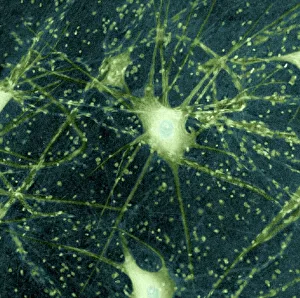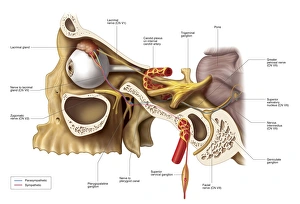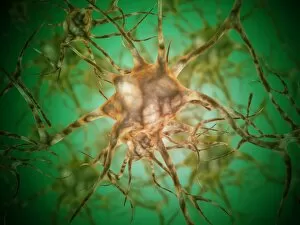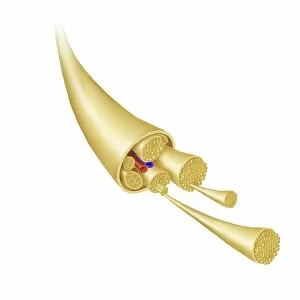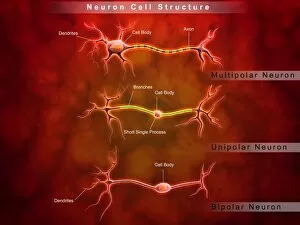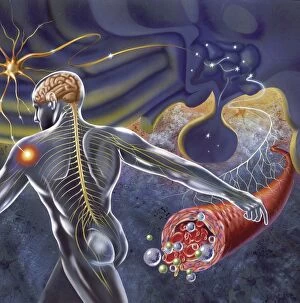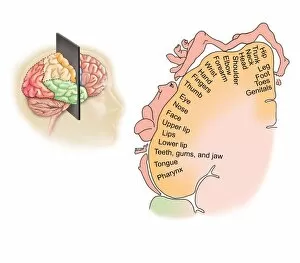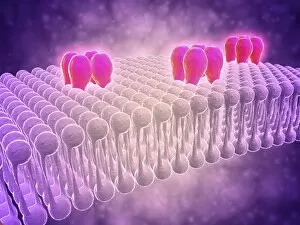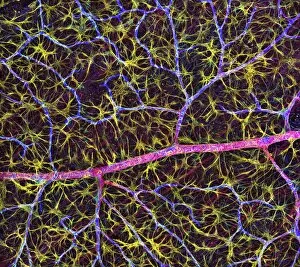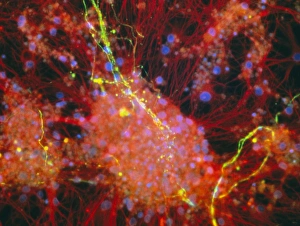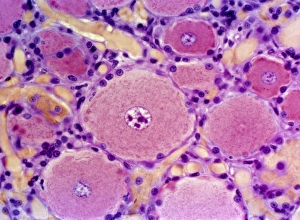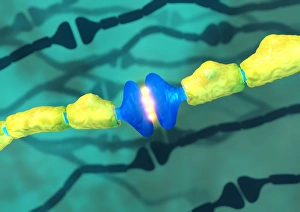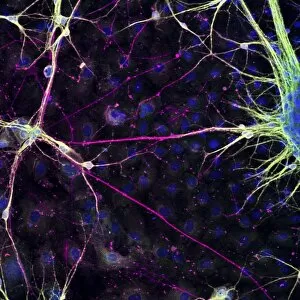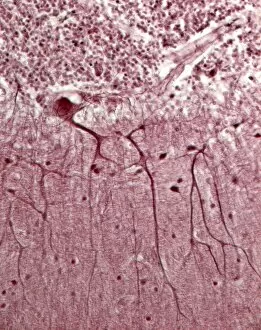Nerve Cells Collection
Nerve cells, also known as neurons, are the building blocks of our intricate nervous system
All Professionally Made to Order for Quick Shipping
Nerve cells, also known as neurons, are the building blocks of our intricate nervous system. These remarkable cells play a crucial role in transmitting signals throughout our body, allowing us to move, think, and feel. Motor neurons are a type of nerve cell that carry messages from the brain to muscles or glands. Through their long extensions called axons, they enable precise movements and coordinated actions. Santiago Ramon y Cajal, a renowned histologist, made significant contributions to our understanding of nerve cells. His detailed light micrographs revealed the complex structure and organization of these cells within the brain. Anatomical pathways of innervation to the lacrimal gland demonstrate how nerve fibers connect with this tear-producing gland. This connection ensures proper lubrication for our eyes. Primary cultures of superior cervical ganglia cells provide researchers with valuable insights into how these specific groups function and communicate with each other. A conceptual image depicting synapses inside the brain showcases the incredible complexity involved in transmitting information between neurons. These tiny gaps allow electrical impulses to jump from one neuron to another through chemical messengers called neurotransmitters. Microscopic views offer glimpses into multiple nerve cells or neurons at work. They reveal their unique shapes and structures as they form networks responsible for relaying information throughout our body. One such view highlights a unipolar neuron - a type characterized by having only one extension emerging from its cell body. This specialized structure allows efficient transmission over long distances within our nervous system. The detail captured in an image showcasing a nerve bundle emphasizes their importance in carrying signals across various regions of our body rapidly. Bundles like these ensure effective communication between different parts of our anatomy. Another microscopic view captures multiple interconnected neurons once again – emphasizing their abundance and essential role in maintaining overall bodily functions seamlessly. An orbital cut displaying nerves like abducent nerves alongside ciliary ganglion and oculomotor nerves reveals how intricately woven these neural pathways are. They enable precise eye movements and coordination.

